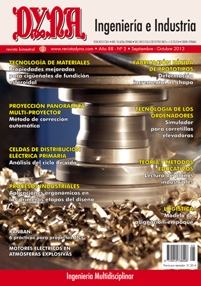LIFE CYCLE ASSESSMENT IN SWITCHGEARS FOR PRIMARY ELECTRICAL DISTRIBUTION
Keywords:
Análisis del ciclo de vida, impacto ambiental, ecodiseño, celdas de distribución primaria, Life cycle assessment, environmental impact, ecodesign, switchgears for primary distributionAbstract
ABSTRACT: This article describes how life cycle assessments are performed in the ecodesign learning centre at the University of the Basque Country (UPV-EHU) aiming at improving already existing products. In this case, the assessed product has been a series of switchgears for primary distribution manufactured by a company specialized in electrical applications. The primary aim of this assessment was to come up with some improvement actions that can be applied to these switchgears so as to redesign and manufacture these assemblies in a more sustainable way. In addition, the ultimate purpose of this research is the introduction of the ecodesign concept in more products of the company. Throughout this study, the switchgears have been classified according to 5 categories of environmental impact: acidification, eutrophication, global warming, ozone layer depletion and photochemical oxidation. A special emphasis has been placed on global warming, since it is considered one of greatest environmental problems at present. Using the SimaPro tool, all the components making up the switchgear for primary distribution have been analyzed one by one and separately. Thanks to this study, the first improvement action implemented in the production process of the switchgear has considerably diminished its environmental impact. Besides, most of the reasons causing the impacts have been identified. The company is now using this information as a starting point for the investigation and execution of ecodesign methodologies in the development of new products.Downloads
Published
2013-09-01
Issue
Section
ARTICULOS

